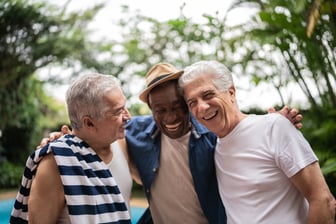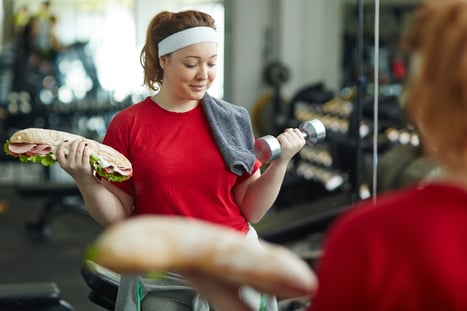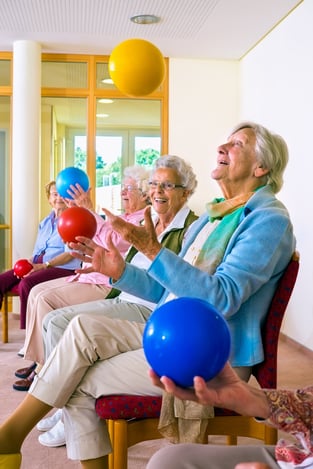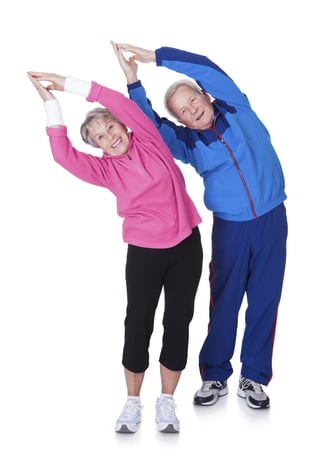 In the golden years of life, one's perspective becomes a cherished companion, guiding the way through memories and new experiences. The importance of perspective for senior citizens cannot be overstated. It can shape the quality of their lives, influence well-being, and contribute significantly to a fulfilling and joyous retirement. In this blog, we'll delve into the significance of perspective for seniors and explore how cultivating a positive outlook can enhance their overall happiness and life satisfaction.
In the golden years of life, one's perspective becomes a cherished companion, guiding the way through memories and new experiences. The importance of perspective for senior citizens cannot be overstated. It can shape the quality of their lives, influence well-being, and contribute significantly to a fulfilling and joyous retirement. In this blog, we'll delve into the significance of perspective for seniors and explore how cultivating a positive outlook can enhance their overall happiness and life satisfaction.
The Power of Perspective
As individuals age, they often encounter changes in health, lifestyle, and social dynamics. These shifts can be challenging, but the lens through which these changes are viewed can make all the difference. Rather than focusing solely on limitations, a positive perspective allows seniors to see opportunities for growth, adaptation, and continued engagement with life. This shift fosters resilience and a proactive approach to navigating the evolving landscape of aging.
Cultivating Gratitude
Gratitude has the transformative ability to elevate one’s perspective at any age. For seniors, reflecting on a lifetime of experiences and expressing appreciation for the lessons learned and relationships forged can bring profound fulfillment. Embracing gratitude allows seniors to recognize the richness of their journey, promoting a positive outlook that positively impacts mental and emotional well-being.
Tips for Practicing Gratitude:
- Keep a gratitude journal, noting daily positives.
- Share stories of meaningful moments with friends or family.
- Engage in community service, giving back can enhance feelings of gratitude.
Finding Purpose in Retirement
A positive perspective instills a sense of purpose, a vital element for seniors entering retirement. Whether through volunteer work, pursuing hobbies, or spending quality time with loved ones, maintaining a sense of purpose contributes to a meaningful life. By viewing retirement as an opportunity for new beginnings rather than an endpoint, seniors can embark on this chapter with enthusiasm and renewed passion.
Nurturing Social Connections
The importance of social connections for seniors cannot be emphasized enough. A positive perspective enhances the quality of these relationships, fostering community and mutual support. Engaging with friends, family, and the broader community provides opportunities for shared experiences, laughter, and emotional well-being. By valuing social connections and maintaining an open-minded perspective, seniors can combat feelings of isolation and cultivate a rich tapestry of relationships.
Embracing Change
Life is dynamic, and adapting to change is a constant reality. Seniors who approach change with a positive perspective are better equipped to navigate challenges, whether it’s adjusting to a new living arrangement, embracing technology, or adapting to changing health conditions. A flexible and optimistic mindset allows seniors to face transitions with resilience and grace.
The Power of Mindfulness
In the later years of life, mindfulness becomes a powerful tool for staying present and savoring the richness of each moment. By cultivating awareness and living in the present, seniors can appreciate the beauty in small, everyday experiences. This mindful perspective fosters gratitude for the simple joys that make life meaningful.
A New Dawn of Possibilities
As the sun sets on one chapter of life, a new dawn emerges, filled with possibilities. The importance of perspective for seniors lies in its power to shape their narratives. A positive outlook not only enhances emotional well-being but also opens doors to a life filled with purpose, gratitude, and meaningful connections.
Embrace your golden perspective! Reflect on your journey, share your stories, and engage with your community. Remember, it’s never too late to shift your outlook and discover the beauty of this stage of life.
By navigating the complexities of aging with resilience, grace, and an enduring zest for life, seniors can truly thrive.


 Precontemplation
Precontemplation
 Group exercise classes are one of the top activities in senior living communities nowadays. With the increasing number of activities provided on community calendars, having a good group exercise program
Group exercise classes are one of the top activities in senior living communities nowadays. With the increasing number of activities provided on community calendars, having a good group exercise program 
 ith a proactive approach to balance training, we have embarked on a comprehensive fall-prevention model.
ith a proactive approach to balance training, we have embarked on a comprehensive fall-prevention model. 